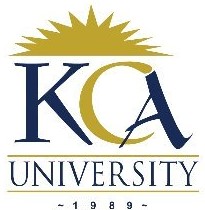
UNIVERSITY EXAMINATIONS: 2016/2017
EXAMINATION FOR THE DEGREE OF BACHELOR OF SCIENCE IN
INFORMATION TECHNOLOGY
BIT2203 BCT 2205 STRATEGIC MANAGEMENT INFORMATION
SYSTEMS/MANAGEMENT INFORMATION SYSTEMS
DISTANCE LEARNING
DATE: AUGUST, 2017 TIME: 2 HOURS
INSTRUCTIONS: Answer Question One & ANY OTHER TWO questions.
QUESTION ONE
a) Discuss the main organisational issues that need to be taken into consideration when
planning, designing and implementing a new information system. (6 Marks)
b) Todayʼ s business environment relies heavily on the Internet. Analyse how the Internet
has changed relationships with customers and suppliers, and how it has subsequently
impacted on competitive advantage. (8 Marks)
c) Michael Porter is a renowned world business guru, using his two famous models give
specific examples on their application citing examples (10 Marks)
d) Outline the main functions of an information system, and identify the main components.
(6 Marks)
QUESTION TWO
(a) Mobile digital platforms are increasingly used by organisations in preference to larger
computers. Analyse this trend and the possible security implications arising. Illustrate your
answer with examples. (8 Marks)
(b) Suggest and explain two technologies or tools that can prevent unauthorised access to an
organisation’s proprietary information. (6 Marks)
(c) discuss the importance of organisational dimension of Information systems when developing
effective systems. (6 Marks)
QUESTION THREE
(a) Contrast decision support systems with group decision support systems, explaining and
giving examples of each (10 Marks)
(b) Suggest possible challenges in implementing group decision support systems. (4 Marks)
(c)Explain the Total Cost of Ownership model in relation to IT investment. (6 Marks)
QUESTION FOUR
(a) Discuss the three main categories of cloud-based services, giving examples of each.
(9 Marks)
(b) Suggest possible reasons for the growing popularity of cloud-based Customer relationship
management (CRM) software. (5 Marks)
(c) Explain two possible conversion strategies that could be adopted by an organisation moving
to a new, cloud-based system, suggesting advantages and disadvantages of each.
(6 Marks)
QUESTION FIVE
a) Explain what is meant by the term enterprise resource Planning (ERP) systems, and outline
the options available to an organisation deciding to acquire ERP software. (6 Marks)
b) It is suggested that enterprise resource Planning (ERP) systems improve efficiency and
customer satisfaction. Why might this be the case? You should illustrate your answer with
examples. (6 Marks)
c) Assess the competitive forces model for IT infrastructure investment and its usefulness in
explaining the value of IT infrastructure investment. (8 Marks)